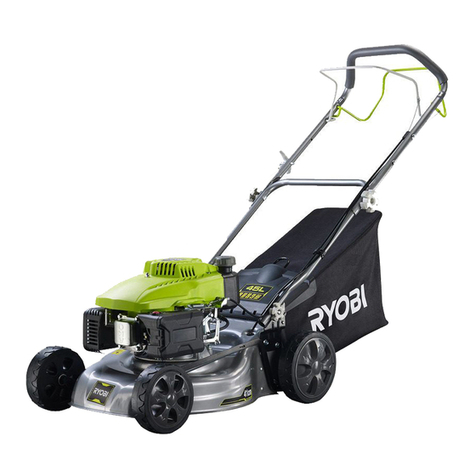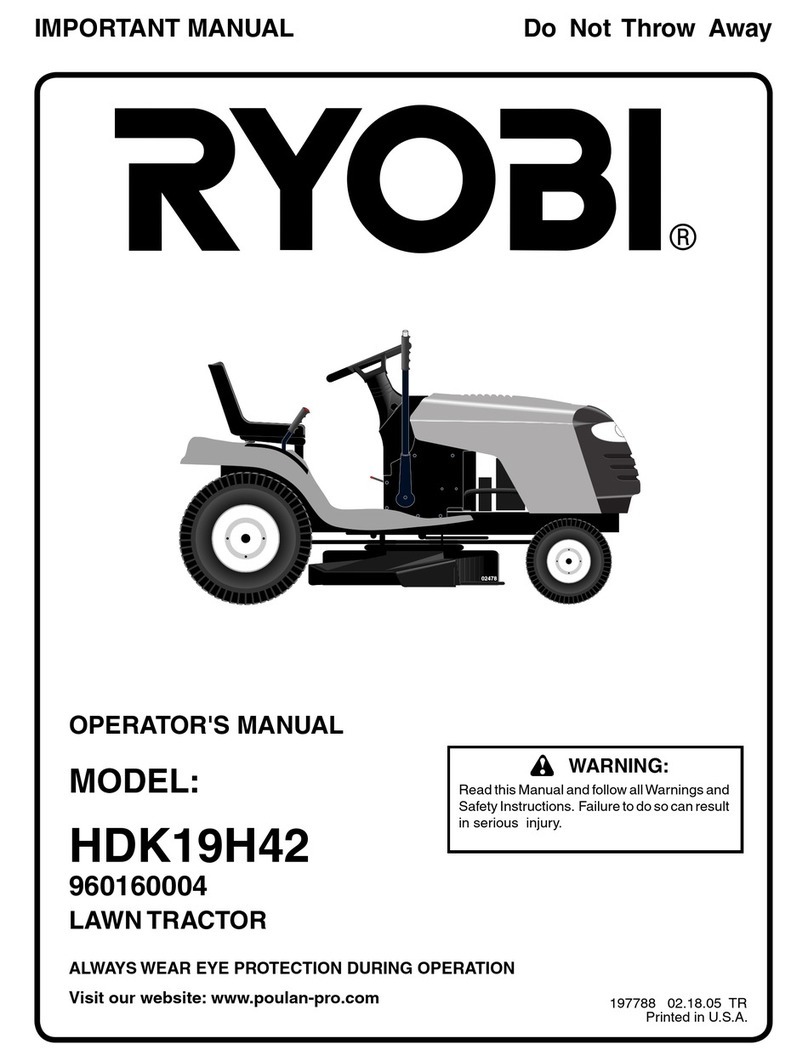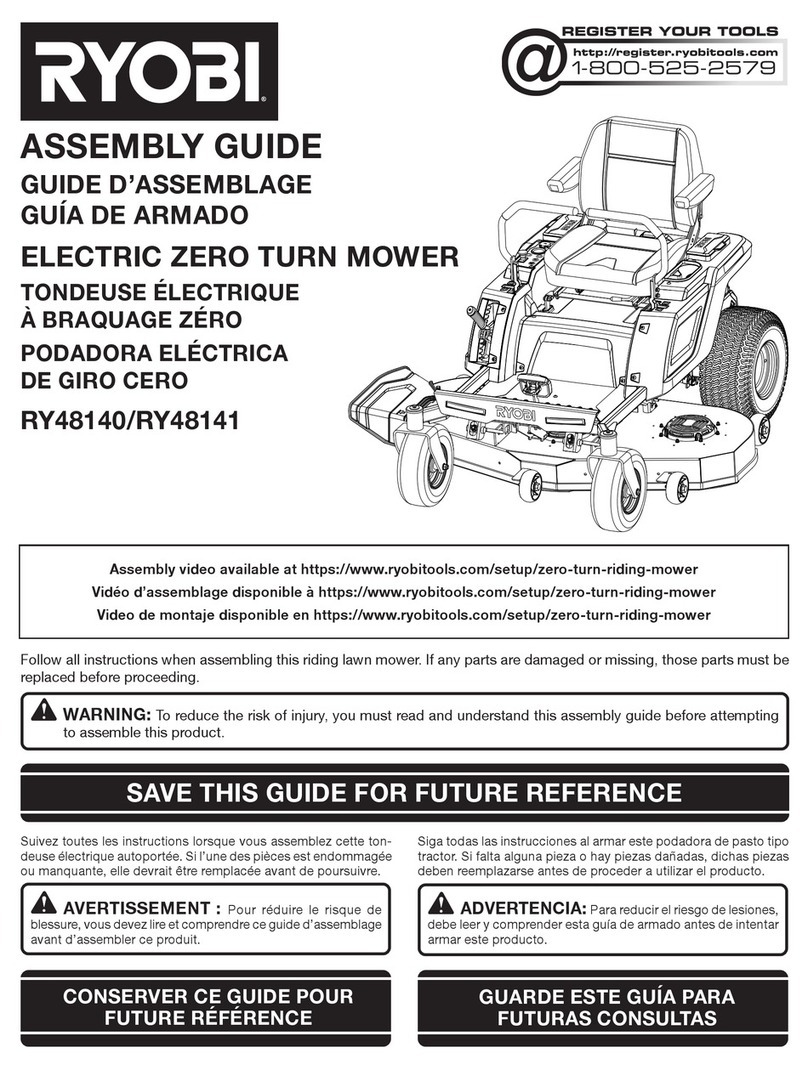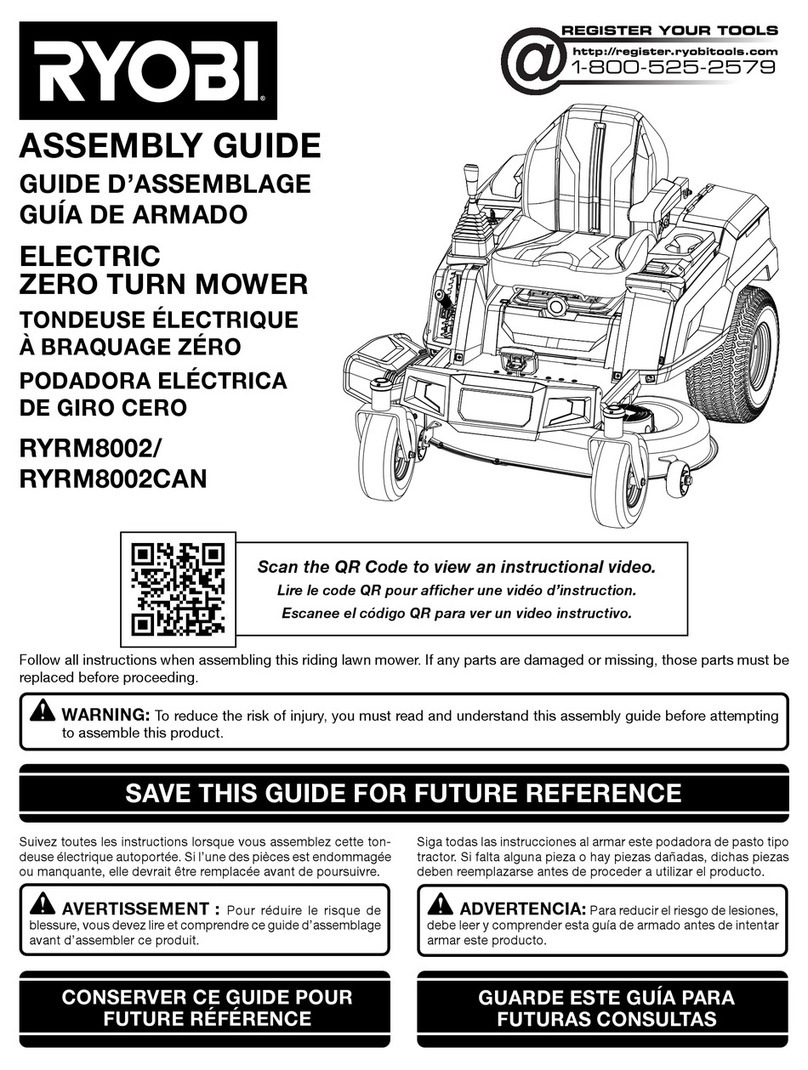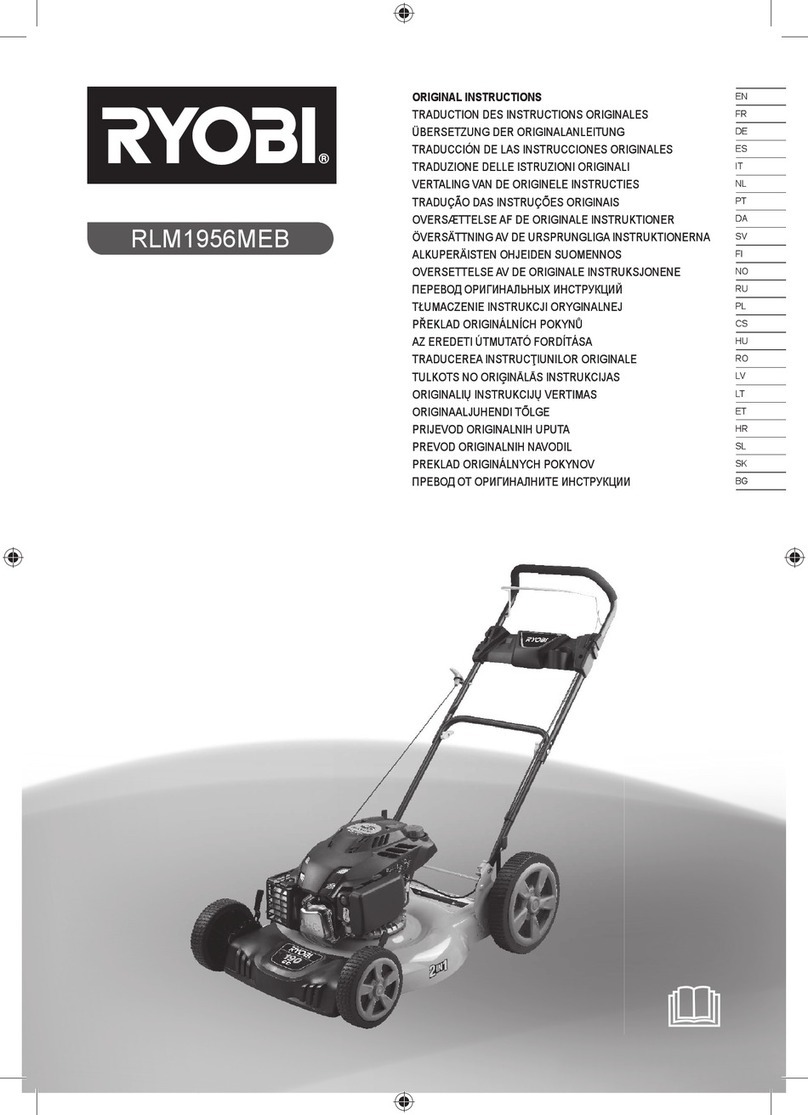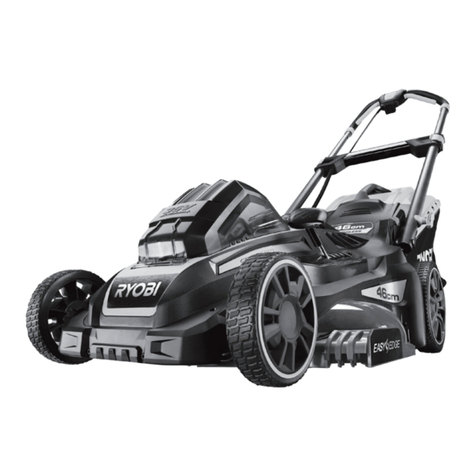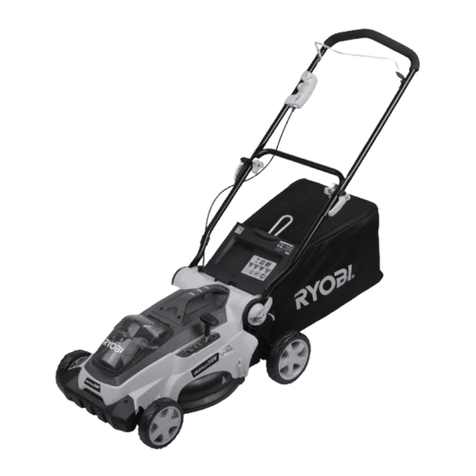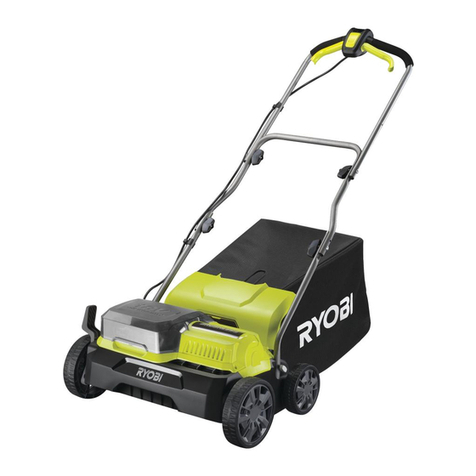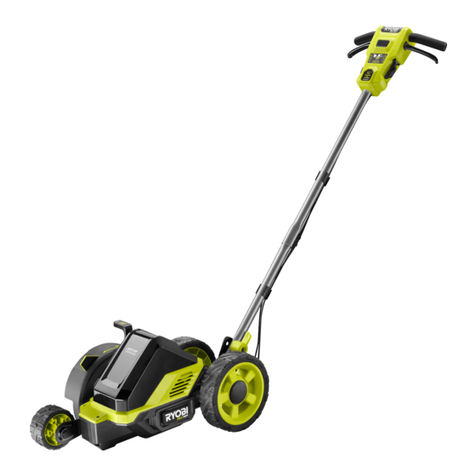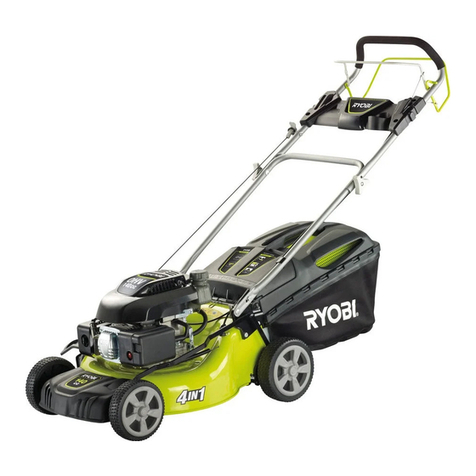1
Thank you for buying a Ryobi lawn mower.
Your new lawn mower has been engineered and
manufacturer to Ryobi’s high standard for dependability,
ease of operation, and operator safety. Properly cared for,
it will give you years of rugged, trouble-free performance.
WARNING
Do not attempt to operate this mower until you have
read thoroughly and understood completely all
instructions, safety rules, etc. contained in this manual.
Failure to comply may result in accidents involving re
or serious personal injury. Save operator’s manual and
review frequently for continuing safe operation and
instructing others who may use this tool.
GENERAL SAFETY RULES
PERSONAL SAFETY
■This lawn mower is capable of amputating hands and
feet, and throwing objects. Failure to observe all safety
instructions could result in serious injury or death.
■Never allow children or people with reduced physical,
sensory, mental capabilities or unfamiliar with the
instructions to use the mower. Local regulations may
restrict the age of the operator. Children should be
adequately supervised to ensure they don’t play with
the mower.
■Ensure before each use that all controls and safety
devices function correctly. Do not use the tool if the
“off” switch does not stop the engine.
■Stay alert, watch what you are doing, and use common
sense when operating the lawn mower. Do not operate
the mower while tired or under the influence of drugs,
alcohol, or medication. A lapse in concentration while
operating the machine may result in serious personal
injury.
■Wear heavy, long trousers, long sleeves, slip-resistant
foot wear, and gloves. Do not wear loose fitting
clothing, short trousers, sandals, or go barefoot.
■Wear ear protection and safety glasses at all times
while operating the machine. Use face mask if
operation is dusty.
■Use of hearing protection reduces the ability to hear
warnings (shouts or alarms). The operator must pay
extra attention to what is going on in the working area.
■Operating similar tools nearby increases both the risk
of hearing injury and the potential for other persons to
enter your working area.
■Always be sure of your footing, especially on slopes.
Keep firm footing and balance. Do not overreach.
Overreaching can result in loss of balance.
■Walk, never run.
■Mow across the face of slopes, never up and down.
Exercise extreme caution when changing direction on
slopes.
■Do not mow near drop-offs, ditches, excessively steep
slopes, or embankments. Poor footing could cause a
slip and fall accident.
■Plan your mowing pattern to avoid discharge of
material toward roads, public pavements, bystanders
and the like. Also, avoid discharging material against
a wall or obstruction, which may cause the material to
ricochet back toward the operator.
WORK AREA SAFETY
■Keep all bystanders, children, and pets at least 15 m
away from work area. If anyone enters this area, stop
the machine.
■Do not operate in poor lighting. The operator requires
a clear view of the work area to identify potential
hazards.
■Do not operate the machine in explosive atmospheres,
such as in the presence of flammable liquids, gases
or dust. The tool create sparks which may ignite the
dust or fumes.
■Objects struck by the lawn mower blade can cause
severe injuries to persons. Thoroughly inspect the
area where the machine is to be used and remove all
rocks, sticks, metal, wire, bones, toys, or other foreign
objects.
■Do not operate the machine in wet grass or in the rain.
■Keep in mind that the operator or user is responsible
for accidents or hazards occurring to other people or
their property.
■Tragic accidents can occur if the operator is not alert to
the presence of children. Children are often attracted
to the machine and the mowing activity. Never assume
that children will remain where you last saw them.
■Keep children out of the mowing area and under the
watchful care of a responsible adult other than the
operator.
■Use extra care when approaching blind corners,
shrubs, trees, or other objects that may block your
view.
■Keep work area clean. Cluttered or dark areas invite
accidents.
LAWN MOWER SAFETY WARNINGS
■Before using, always visually inspect to ensure blades,
blade bolts, and cutter assembly are not worn or
damaged.
■Replace worn or damaged blades and bolts in sets to
preserve balance.
■Check all nuts, bolts, and screws at frequent intervals
for proper tightness to be sure the equipment is in safe
working condition.

